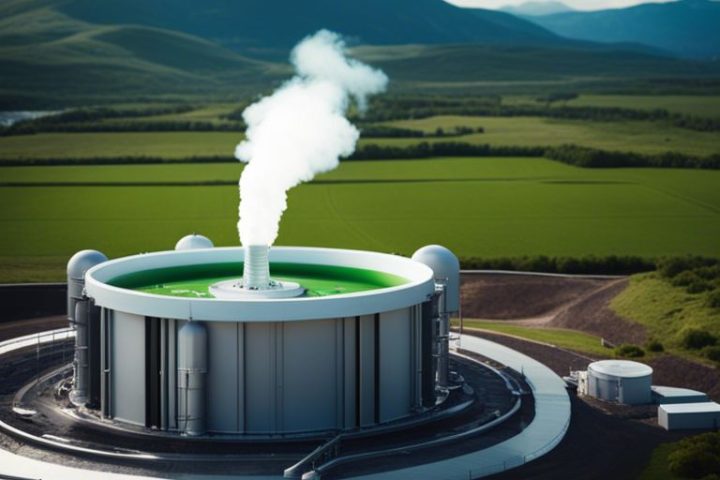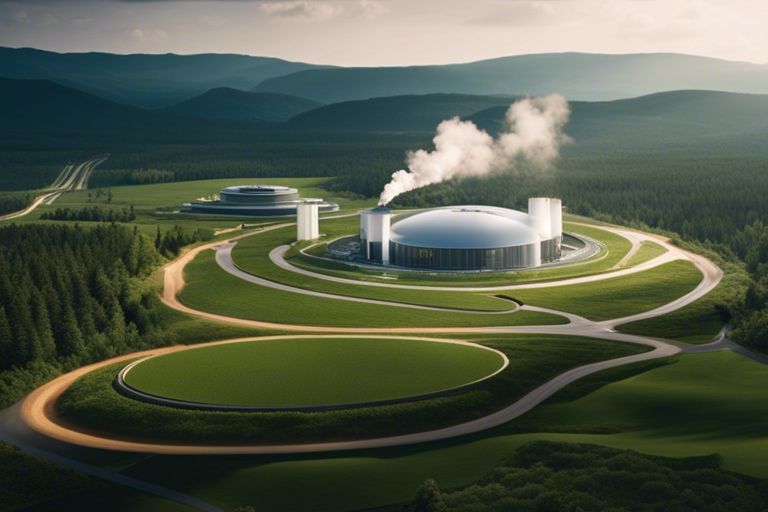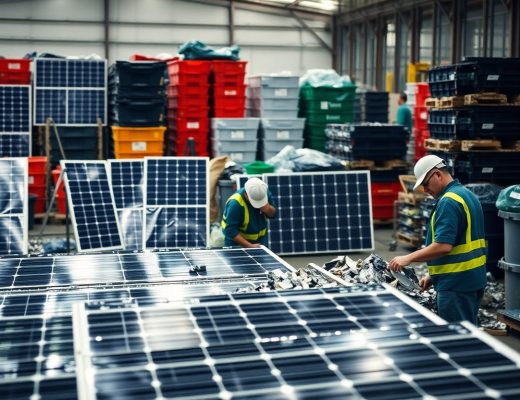Geothermal energy is a sustainable source of power that harnesses the Earth’s natural heat to generate electricity. In this informative post, you will explore the latest innovations in geothermal power generation that are revolutionizing the renewable energy sector. Discover how advancements in technology are making geothermal energy more efficient, cost-effective, and environmentally friendly. By the end, you will have a deeper understanding of how geothermal power is driving us towards a more sustainable future.
History of Geothermal Power Generation
Early Beginnings
To understand the history of geothermal power generation, you must first explore into its early beginnings. Geothermal energy has been utilized for thousands of years, with evidence of its use dating back to ancient civilizations such as the Romans, who used geothermal springs for bathing and heating.
Development of Technology
On the path to the modern era of geothermal power generation, significant advancements were made in the development of technology. One pivotal moment was the invention of the first binary cycle power plant in the 1960s, which enabled you to harness geothermal energy more efficiently than ever before.
Geothermal power plants today boast impressive efficiency rates, converting the natural heat of the Earth into sustainable energy without emitting harmful greenhouse gases. This innovative technology not only provides a reliable source of power but also plays a crucial role in reducing carbon emissions and combatting climate change.
Principles of Geothermal Power Generation
If you want to understand the principles of geothermal power generation, you need to investigate into the mechanisms of heat transfer and energy conversion that make this sustainable energy source possible.
Heat Transfer and Energy Conversion
Transfer: Geothermal power generation relies on harnessing the heat stored beneath the Earth’s surface. This heat is transferred to a fluid that circulates through underground reservoirs. As the fluid absorbs the heat, it begins to vaporize and expand, driving a turbine connected to a generator to produce electricity.
Types of Geothermal Systems
With various types of geothermal systems in use today, it’s vital to understand the differences to maximize efficiency and output. The two main types are binary cycle and flash steam systems. Each system operates differently but ultimately aims to convert heat from the Earth into usable electricity.
| Binary Cycle System | Flash Steam System |
| Uses a secondary fluid with a lower boiling point to drive the turbine | Directly uses the steam from the reservoir to drive the turbine |
| Allows for the efficient use of lower temperature geothermal resources | Requires high-temperature geothermal resources for optimal performance |
| Minimizes emissions and environmental impact | Can be more challenging to implement and maintain |
| Offers flexibility in varying geothermal resource conditions | Provides higher power output but may have higher operational costs |
| Cost-effective for moderate temperature reservoirs | Suitable for high enthalpy reservoirs |
This understanding of the different geothermal systems can help you choose the most suitable option based on resource availability, efficiency goals, and environmental considerations.
Innovations in Exploration and Drilling
Some of the most significant advancements in geothermal power generation have come in the field of exploration and drilling. These innovations have helped make geothermal energy more accessible and efficient than ever before.
Advanced Seismic Imaging Techniques
- On-site Sensors
Remote Monitoring - Improved Accuracy
Enhanced Resolution
Enhanced seismic imaging techniques have revolutionized the way geologists identify potential geothermal reservoirs deep beneath the Earth’s surface. By deploying on-site sensors and utilizing remote monitoring capabilities, scientists can gather real-time data to better understand the subsurface conditions. This improved accuracy and enhanced resolution significantly reduce the risks associated with exploration and drilling, making geothermal projects more cost-effective and environmentally friendly.
Enhanced Drilling Technologies
Enhanced drilling technologies have also played a crucial role in advancing geothermal power generation. By incorporating cutting-edge drilling techniques and equipment, engineers can access geothermal reservoirs more efficiently and extract energy with greater precision.
Enhanced drilling technologies utilize state-of-the-art tools such as advanced drill bits, **downhole sensors**, and **directional drilling** to navigate complex geological formations deep underground. This not only increases the overall efficiency of geothermal wells but also minimizes the environmental impact of drilling operations. **These advancements have made geothermal energy a more viable and sustainable option for meeting your energy needs**.
Improvements in Power Plant Design
For
Increased Efficiency through Advanced Materials
Any geothermal power plant aims to maximize efficiency to harness the Earth’s sustainable energy effectively. One way to achieve this is through the use of advanced materials in power plant design. These materials have improved thermal conductivity and durability, allowing for better heat transfer and overall performance.
- Material Type: Enhanced materials with superior thermal properties
- Benefits: Increased heat transfer efficiency and extended plant lifespan
For
Scalability and Modularity
One key aspect of modern geothermal power plant design is the incorporation of scalability and modularity. This approach allows for easier expansion and customization of power plants based on specific requirements and resource availability. With this design, geothermal power plants can be adapted to various locations and sizes, making them more versatile and cost-effective.
Increased
Scalability and modularity also enhance the flexibility of geothermal power plants, making them a viable option for both large-scale energy production and smaller, localized operations. By incorporating these features, geothermal power generation becomes more adaptable to changing energy demands and environmental conditions.
Enhanced Geothermal Systems (EGS)
Unlike conventional geothermal power plants that rely on naturally occurring geothermal reservoirs, Enhanced Geothermal Systems (EGS) aim to create artificial reservoirs by stimulating and enhancing the permeability of deep hot rock formations.
Artificial Reservoir Creation
On the forefront of EGS technology is the creation of artificial reservoirs through advanced stimulations techniques. By fracturing the impermeable rock formations deep beneath the Earth’s surface, engineers can enhance the flow of water and heat, creating a sustainable source of geothermal energy. This innovation has the potential to unlock vast untapped geothermal resources around the world.
Stimulation and Circulation Techniques
With stimulation and circulation techniques, engineers can precisely control the permeability of the reservoir and the circulation of water through the hot rock formations. By injecting fluids at high pressures, fractures are created or enhanced, allowing for better heat exchange between the rocks and the circulating water. This method increases the efficiency and productivity of the geothermal system, leading to higher energy output.
Stimulation and Circulation Techniques
Circulation of the geothermal fluid is crucial in maintaining the sustainable operation of the EGS. Proper circulation ensures that the heat extracted from the reservoir is utilized effectively and that the fluid returns to the surface at the optimal temperature for power generation. Advanced monitoring and control systems are employed to optimize the circulation process, maximizing energy production while minimizing environmental impact.
Environmental Benefits and Challenges
Carbon Footprint Reduction
Despite the challenges, geothermal power generation offers significant environmental benefits, particularly in terms of reducing your carbon footprint. The process produces virtually no greenhouse gas emissions compared to fossil fuel-based power plants. By harnessing the earth’s natural heat, geothermal energy helps mitigate climate change and contributes to a cleaner atmosphere.
Land Use and Water Management
To address concerns about land use and water management in geothermal power generation, technology advancements have been made to maximize efficiency and minimize environmental impact. Geothermal power plants occupy smaller land areas compared to other renewable energy sources, making them ideal for urban settings. Additionally, advancements in binary cycle technology have reduced water consumption, making geothermal energy an even more sustainable option.
With proper land use planning and water recycling techniques, geothermal power generation can be implemented responsibly to ensure minimal disruption to the environment. By utilizing the earth’s natural heat in a sustainable manner, you can contribute to a greener future while meeting your energy needs.
Future Directions and Potential Applications
Many exciting advancements are on the horizon for geothermal power generation, leading to innovative applications and increased efficiency. Two key areas of future development include Hybrid Power Plants and Grid Integration, as well as Global Expansion and Rural Electrification.
Hybrid Power Plants and Grid Integration
Applications of hybrid power plants, which combine geothermal energy with other renewable sources such as solar or wind, show great promise for maximizing energy output and enhancing grid stability. By integrating different energy sources, these hybrid systems can optimize power generation and provide a more consistent supply of electricity, reducing reliance on fossil fuels. The integration of geothermal power into existing grids can also help balance fluctuations in energy supply, ensuring a more reliable and sustainable energy infrastructure.
Global Expansion and Rural Electrification
Applications of geothermal power extend beyond traditional energy markets, offering opportunities for global expansion and rural electrification. In areas where access to electricity is limited, geothermal energy can play a crucial role in providing clean and reliable power to communities. By expanding geothermal projects to rural regions, you can help improve living conditions and stimulate economic growth while reducing carbon emissions and reliance on non-renewable energy sources.
To harness the full potential of geothermal power and drive sustainable development worldwide, increased investment and collaboration are necessary. Embracing these future directions in geothermal power generation can lead to a more resilient and environmentally friendly energy sector that benefits both current and future generations.
Conclusion
Drawing together the concepts and innovations in geothermal power generation for sustainable energy, it is evident that advancements in technology and engineering are paving the way for a more environmentally friendly future. By harnessing the heat from beneath the Earth’s surface, we have the potential to reduce our dependence on fossil fuels and mitigate the effects of climate change.
As you continue to explore the world of geothermal energy, remember that your choices and actions can have a significant impact on the health of our planet. Embracing sustainable energy sources like geothermal power generation can help create a cleaner, greener future for generations to come. Your support and advocacy for these innovations are key in driving the transition to a more sustainable energy landscape.





